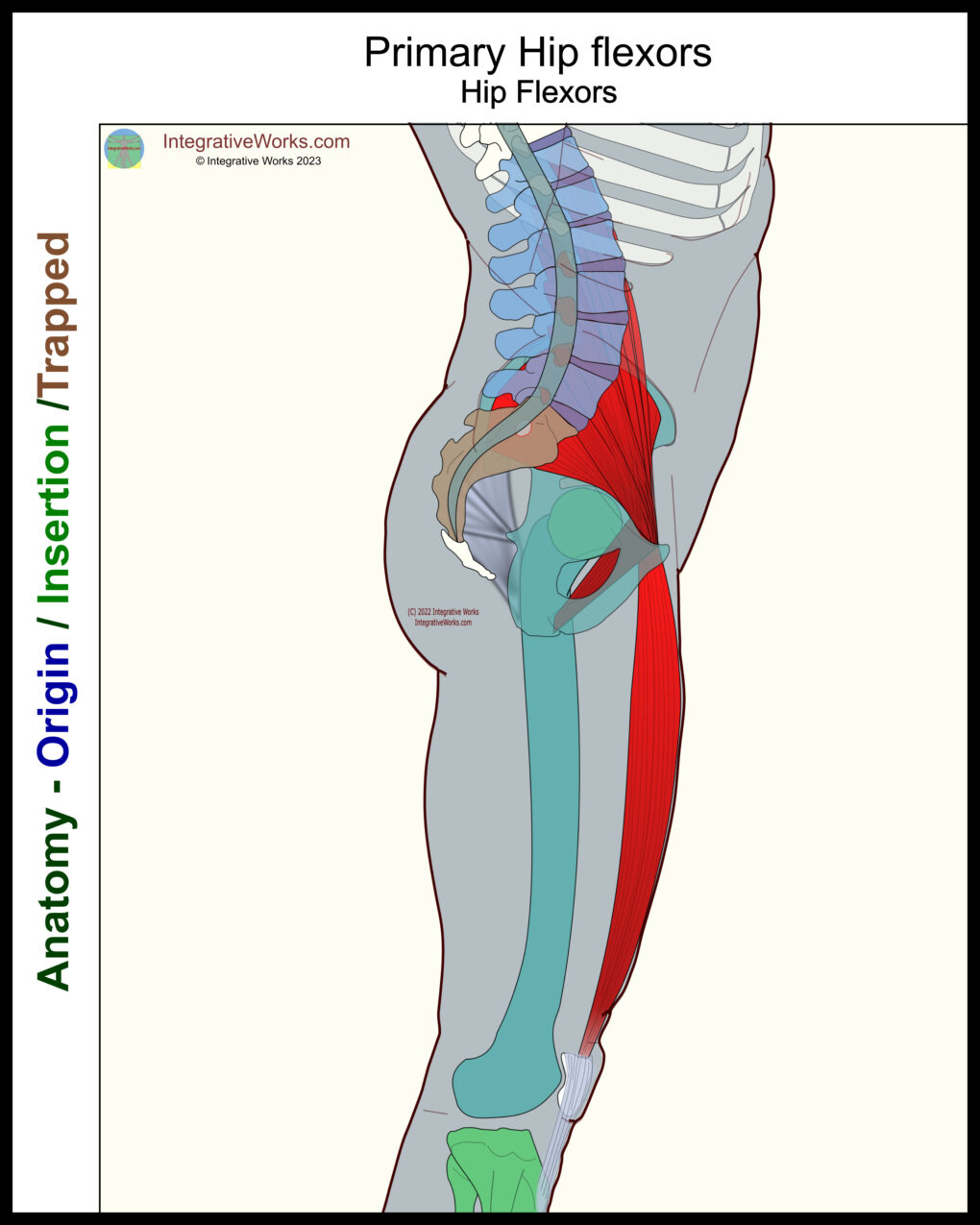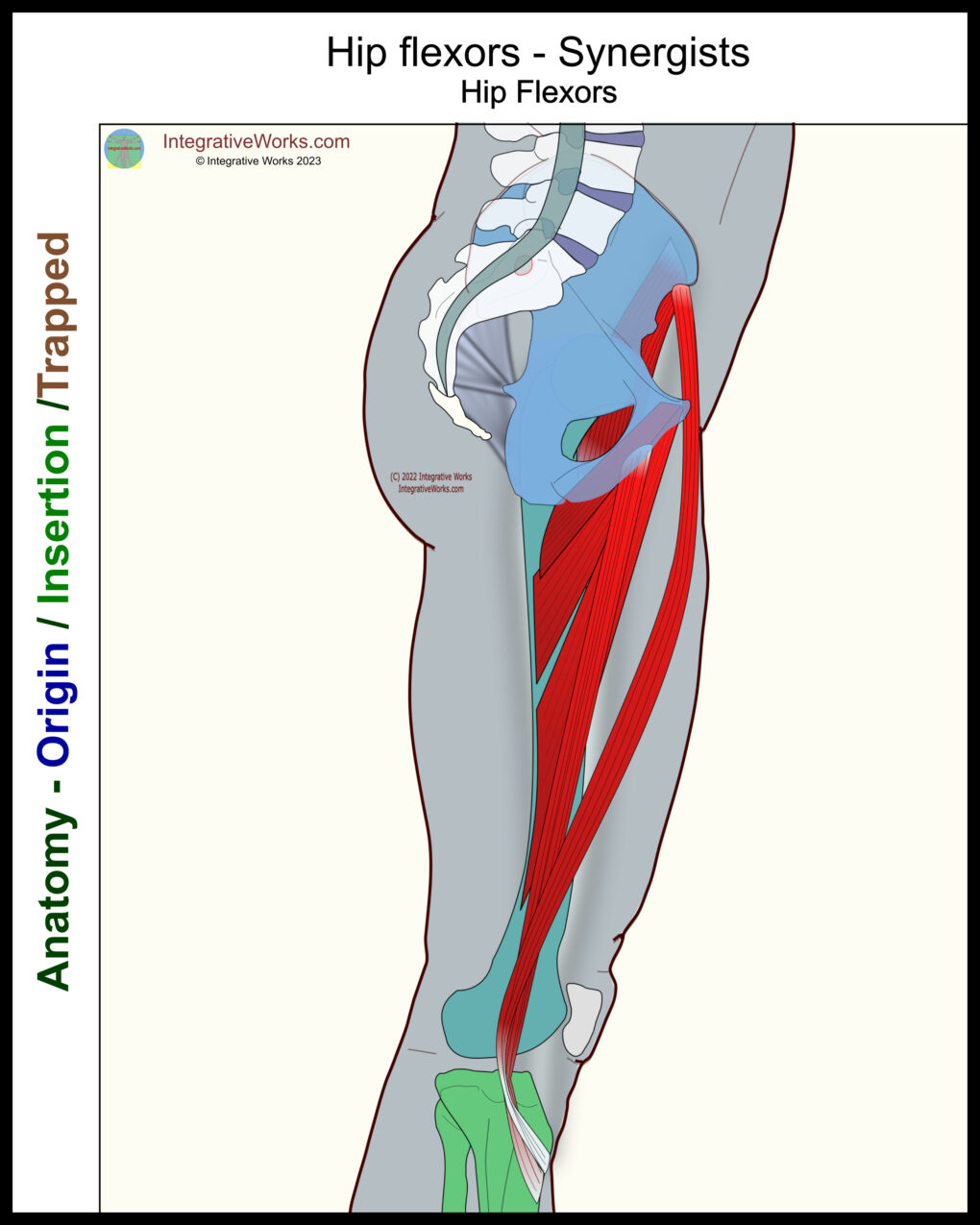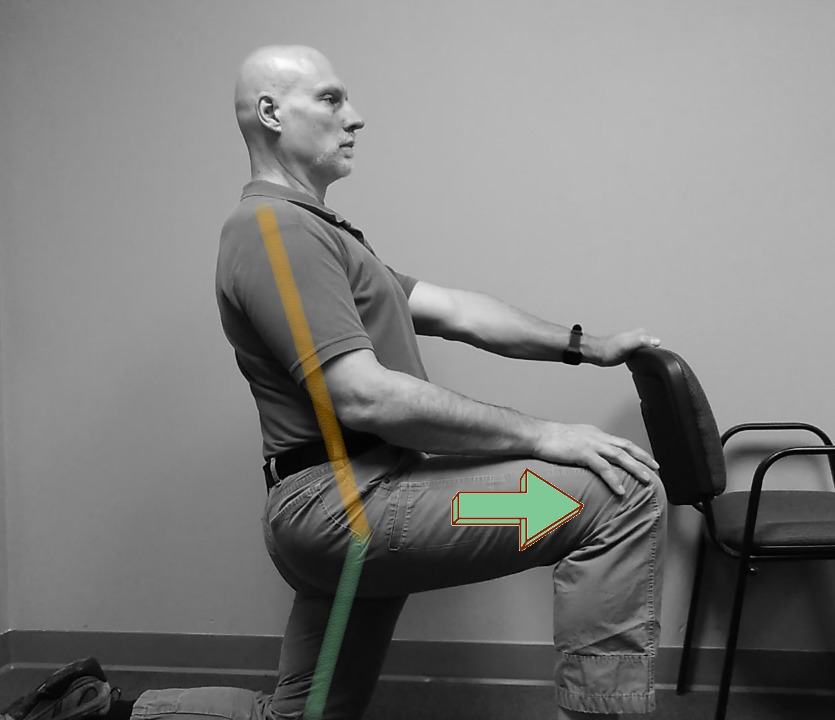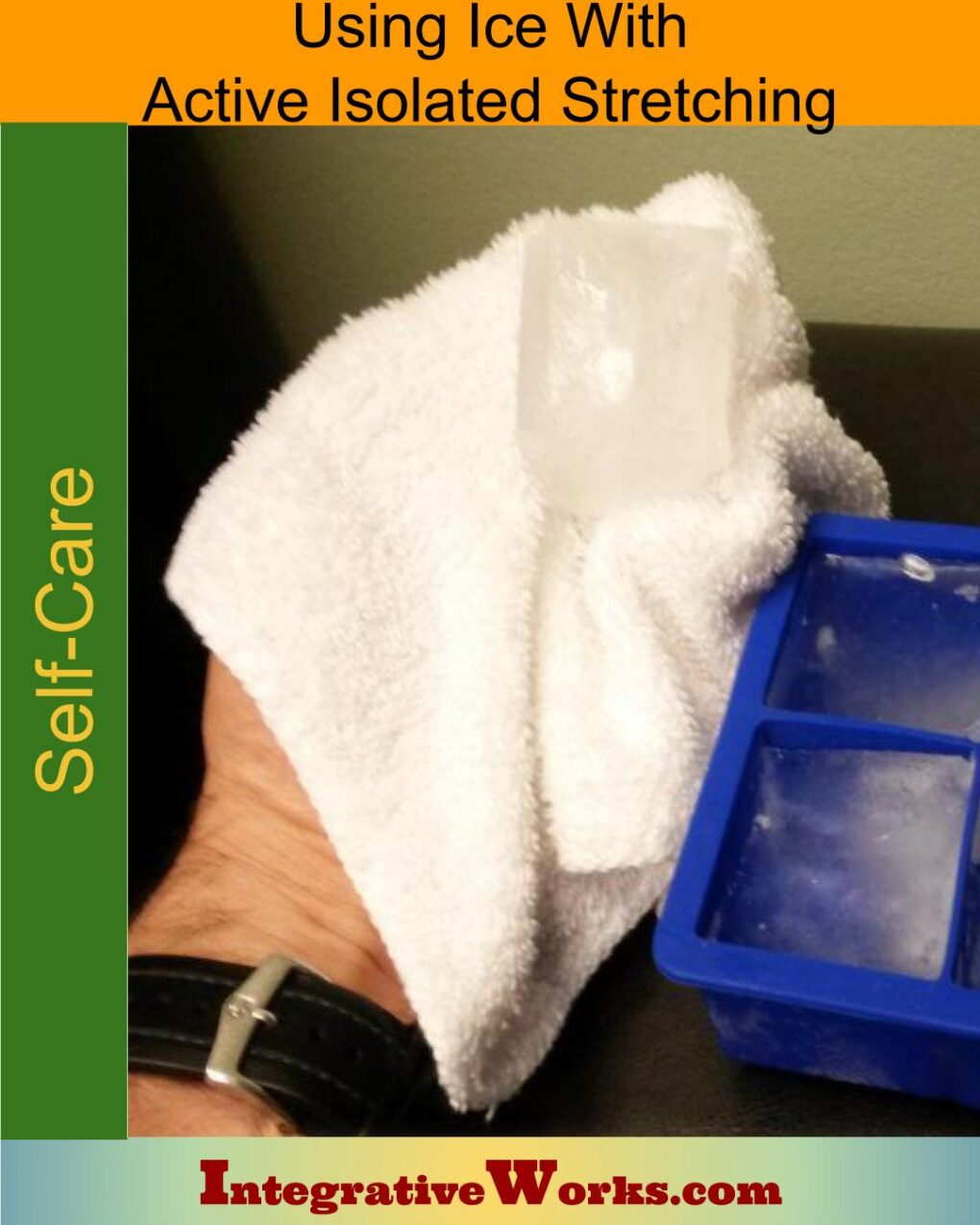Here, you will find a reliable self-care approach for hip flexors. For good reasons, this is one of the classic stretches for hip flexors. First, it gives you lots of control. Second, it allows you to be very specific. At times, this is too intense and creates some sharp pain across the top of your hip. In that case, look at some of the stretching and yoga tips in this other post.

Primary
Most people think of psoas as THE hip flexor. As well, primary hip flexor muscles include other muscles:

Synergists (assisting)
As you can see, these synergists are also involved in hip flexion. Notably, they all cross the anterior hip joint. Additionally, they create pain patterns as they help to stabilize hip flexion.
- Tensor Fascia Lata
- Sartorius
- Gracilis
- Pectineus
- Adductor Longus
- Adductor Brevis
This stretch helps with chronic tightness in all of those muscles.
Better with Ice and Active Stretching
This stretch protocol works even better when you use AIS guidelines in combination with icing. This is not the traditional icing that takes 15-20 minutes. Instead, a brief stroke of ice on the surface releases the muscle. After, Active Isolated Stretching uses gentle repetitions to relieve the muscle more quickly. This works with the nervous system to retrain the muscle.
This post shows you how to use ice to stretch with less pain and more effective results in less time.
If you are not using ice, do 10-20 very gentle reps. If you’re using Ice-and-Stretch, this usually releases nicely in 4-5 reps.

Starting position
Kneel on one knee.
Some people use a pillow under the knee that touches the floor because they find this hurts the knee. However, it isn’t the pressure. I know you don’t believe that. It’s the trigger point in the rectus femoris muscle. But, you can use the pillow if you like. If you’d like some relief, rub a little ice or IcyHot on the middle of your thigh, just below the fold of the hip. Usually, you’ll get relief in the kneecap.
Make sure your hip, pelvis, and knee are stacked in a straight line.
Stabilize your Shoulders
Use a stationary object, like the chair in this picture, to stabilize your shoulders. Extend your arm so that the elbow is straight. You can use this as a reminder to keep your shoulders back.

Ease into the Stretch
Ease your front thigh forward like a piston until you feel tension. Most people feel it in the thigh of the leg that is kneeling.
Pay attention to your shoulders. You need to keep your shoulders back so that the hip extends. Otherwise, you are just leaning forward, I’ve shown this stretch to people for more than 20 years, and almost everybody leans forward and has to be reminded to keep their shoulders back.
If you use ice-and-stretch, it will release more quickly and reduce discomfort, especially in the back. Stroke ice on the front of the abdomen on the side that is kneeling. You can also use a topical cream like IcyHot.
Most people feel the trigger point referral of iliopsoas as pain/tension extends down into the thigh. Some get pain in their back or other referral patterns in the back or thigh.
Return and Repeat
After holding for about 2 seconds. return to the upright position by moving your hips back under your shoulders.
Four or five reps will do if you’re using ice and stretch. If you’re not using ice-and-stretch, go for twenty gentle reps.
If you have sharp pain across the top of your pelvis, Use a more gentle psoas stretch like Upward Dog or Bridges.
Support Integrative Works to
stay independent
and produce great content.
You can subscribe to our community on Patreon. You will get links to free content and access to exclusive content not seen on this site. In addition, we will be posting anatomy illustrations, treatment notes, and sections from our manuals not found on this site. Thank you so much for being so supportive.
Cranio Cradle Cup
This mug has classic, colorful illustrations of the craniosacral system and vault hold #3. It makes a great gift and conversation piece.
Tony Preston has a practice in Atlanta, Georgia, where he sees clients. He has written materials and instructed classes since the mid-90s. This includes anatomy, trigger points, cranial, and neuromuscular.
Question? Comment? Typo?
integrativeworks@gmail.com
Follow us on Instagram

*This site is undergoing significant changes. We are reformatting and expanding the posts to make them easier to read. The result will also be more accessible and include more patterns with better self-care. Meanwhile, there may be formatting, content presentation, and readability inconsistencies. Until we get older posts updated, please excuse our mess.


